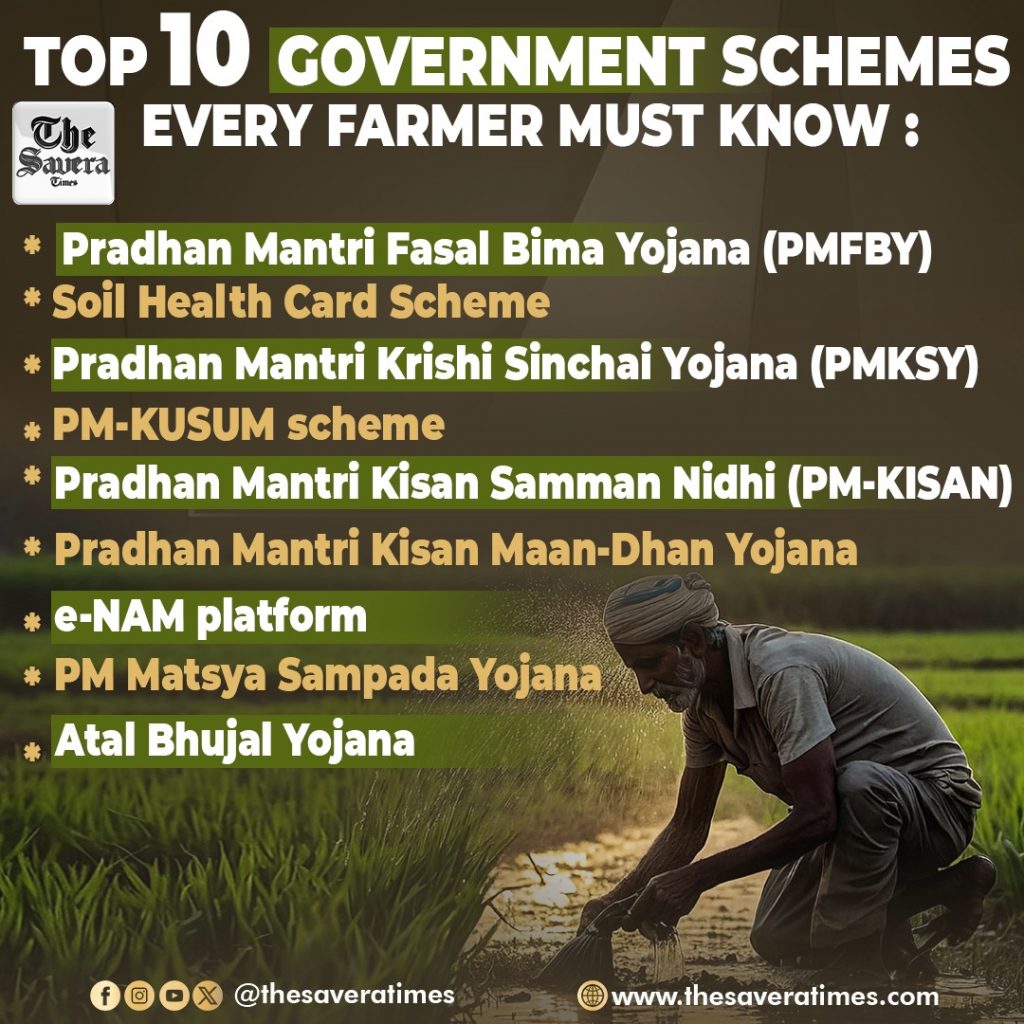New Delhi: The Central government in recent years have launched several schemes for the welfare of farmers across the country which aim to double their income and sell their at best prices, enhance irrigation, improve soil health, and leverage technology.
At the forefront is the Pradhan Mantri Fasal Bima Yojana (PMFBY), launched in 2016. The crop-insurance initiative offers comprehensive coverage against natural calamities, pests, and diseases. Over 5 crore farmers have enrolled, and claims exceeding ₹95,000 crore have been disbursed.
Complementing crop protection, the Soil Health Card Scheme, introduced in 2015, now serves more than 23 crore farmers. It provides personalized nutrient recommendations, boosting yields and reducing fertilizer waste.
To tackle water scarcity, the Pradhan Mantri Krishi Sinchai Yojana (PMKSY)—also known as “Har Khet Ko Pani”—and its “Per Drop More Crop” variant promote drip and sprinkler irrigation, helping farmers save water while enhancing productivity.
Modern energy solutions are driven by the PM-KUSUM scheme, offering up to 60% subsidy on solar irrigation pumps. Over 3.5 million farmers have adopted solar-powered pumps, reducing diesel dependence and enabling them to sell surplus power.
Social safety nets include the Pradhan Mantri Kisan Samman Nidhi (PM-KISAN), which provides ₹6,000 per year to small and marginal farmers, benefiting over 11 crore individuals.
The Pradhan Mantri Kisan Maan-Dhan Yojana ensures a ₹3,000 monthly pension post-60 years, with 23 lakh currently enrolled.
The e-NAM platform, launched in 2016, integrates over 1,400 mandis, enabling real-time price discovery and better market access.
Less-discussed initiatives like the PM Matsya Sampada Yojana (2019), aimed at boosting fisheries and fish processing infrastructure, and (2019), focused on groundwater management in seven states, are also part of the comprehensive strategy.
Experts say these ten schemes collectively modernize farming through technology, financial security, and sustainable practices. “By integrating insurance, irrigation, energy, and market access, the government is creating a resilient agritech ecosystem,” said an agriculture analyst.
